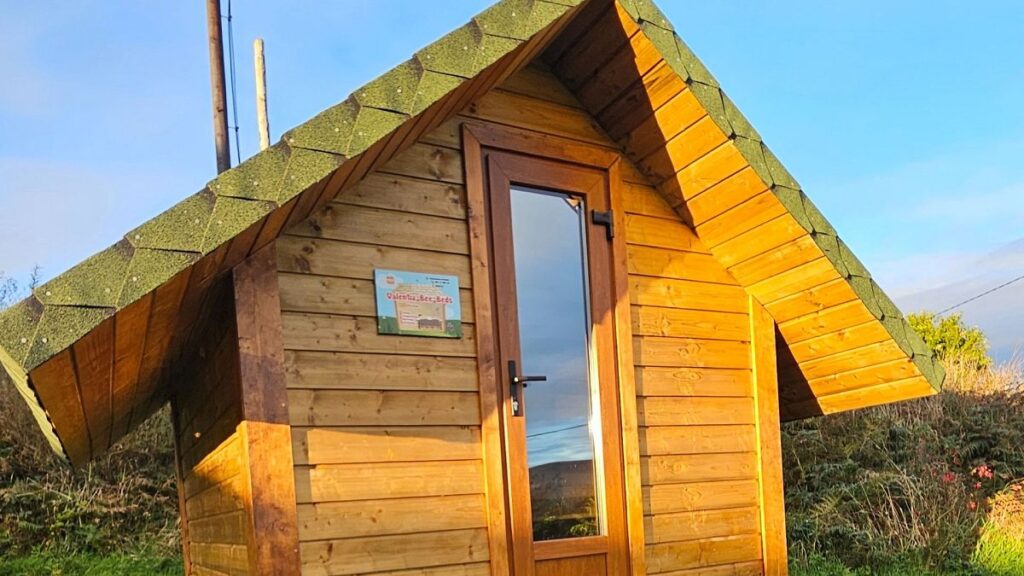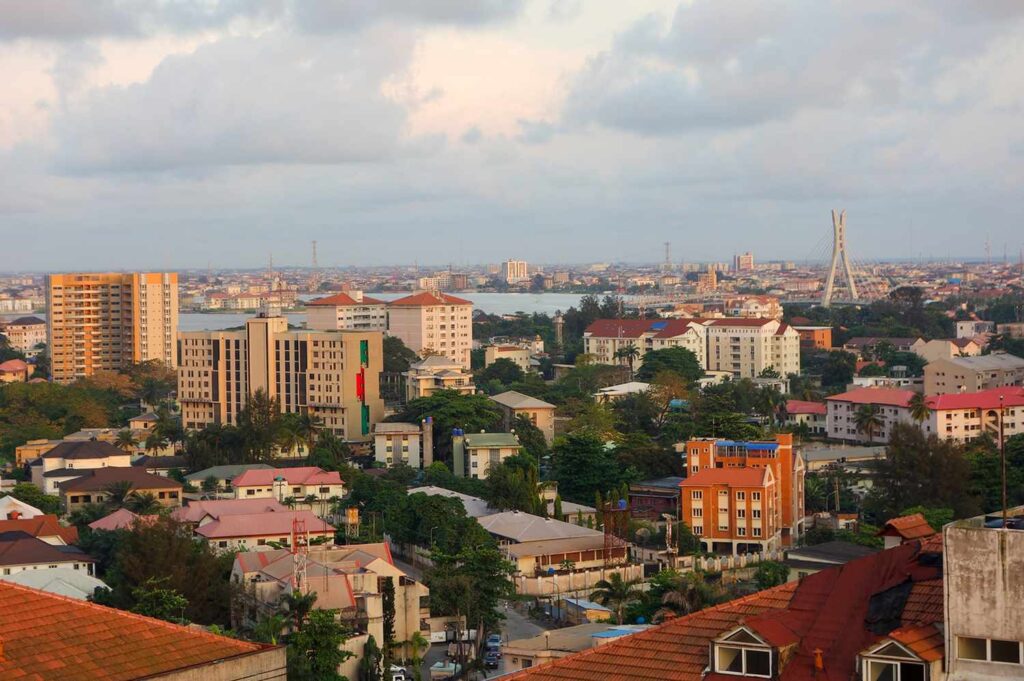The latest buzz on Ireland’s Wild Atlantic Way is a holistic healing bee experience.
As Paul O’Neil was tending to his new beehives one day, a family with three young children walked by.
There was nothing unusual in this, except that this was a remote patch of Valentia Island in Ireland, that few people stumbled upon.
The father spotted Paul dressed up in his bee suit and immediately started waving eagerly. This was Anton Tovarnitskyi, a Ukrainian man who had just escaped the war and relocated with his family to the island, which is tucked away in one of Ireland’s most westerly points in County Kerry.
As it turns out, despite having little shared language at the time, he managed to explain to Paul that he, too, had been a beekeeper.
Immediately, the pair bonded. Over time, as his English improved, Anton started telling Paul about how, in Ukraine, they used to fashion beds over beehives for therapeutic benefits.
As they researched together, they discovered that bee beds were as ancient as beekeeping in Eastern Europe.
“We said let’s partner up and build the first bee beds in Ireland,” explains Paul, “and we managed to build our first one in just a few months.”
Due to demand, they quickly built a second.
The buzz about Valentia Island on Ireland’s Wild Atlantic Way
Valentia Island is no stranger to tourists, as it’s on the Wild Atlantic Way, a breathtaking 2,500 km coastal route along the west coast of Ireland.
The island, which is reachable by car ferry and road, or bus or train from Killarney, receives around 20,000 visitors annually.
Most tourists come to the island to see the picturesque lighthouse, which has been keeping ships safe for 180 years. But since the bee beds were launched in summer 2023, visitors have been drawn to the island for a unique ‘hive healing’ experience.
“We’ve created a whole experience around the bee beds,” explains Paul.
“You start in a converted bus where we will give you a drink of propolis (a natural liquid collected by honey bees from buds and trees), then we will help you into your beekeeping suits, which you’ll need to protect against the free-flying bees before you get inside our bee houses.”
Each wooden house has two beds, each with five hives underneath it. You’re very close to the bees but protected by a fine mesh.
There are also observation hives built into the wall of the house where you can observe all the bees – from walkers and drones to even the queen – in a way that “you can’t even do through traditional beekeeping,” says Paul.
“You’re then free to just lie down and experience this unique moment as you take in the microvibrations of the bees.”
With a total of 15 hives, each boasting 50,000 bees in the wooden house, it feels like you are in the heart of a beehive.
Guests usually linger for about half an hour, breathing in the smell of fanning bees, which releases a unique ‘come here’ pheromone.
It’s common to drift off into a deep sleep, supported by the cabin’s advanced red light technology, pulsed electromagnetic field (PEMF) therapy, sound therapy, and aromatherapy. But even if you don’t, you can meditate to the resonance of a soft humming sound.
The heat of the bees naturally warms the house several degrees higher than the outside temperature. The hive similarly purifies and ionises the air, combining the benefits of propolis, honey, wax, and royal jelly, which Paul says is “very beneficial for cleansing your lungs.”
“If you focus enough and are sensitive to energy, then you’ll feel the microvibrations,” adds Paul. However, even if you don’t, it doesn’t matter, he says, “…as these work at a human cellular level, soothing your nervous system”.
Bee beds are an ancient European tradition
Being so intimate with honey bees is thought to have beneficial health effects.
While claims haven’t been proven, bee beds have been used for centuries for sleep disorders, respiratory issues, fatigue, tinnitus, and stress.
It’s also perhaps why history reports that beekeepers lived longer than anyone else.
This includes the 19th-century Swiss entomologist François Huber, who, despite being blind, studied honey bees and lived until 81, and the Polish apiarist Johann Dzierzon, who lived until 95 years old, which was very rare in the early 20th century.
Bee beds are a new travel experience for nature lovers
The bee houses close during the winter months as that’s when the queen stops laying, meaning that there are typically less than 10,000 bees in each hive in survival mode, but they reopen in the spring when the queen is busy again.
Due to the year-round demand, Anton and Paul are now looking to winter bee experiences for County Kerry’s bee-friendly visitors, who are coming from across Europe and beyond.
There are only a few bee beds worldwide right now, most of which are in Eastern Europe, but more are emerging daily.
Beekeepers, who barely cover their costs these days, can earn a second income from this unusual travel trend. That’s why Paul and Anton offer a course that teaches other apiarist enthusiasts how to set up bee beds from start to finish.
“Bee beds allow normal people to feel the goodness of bees without the risks of being a beekeeper,” says Paul.
They also guarantee a unique wellness holiday experience that you’ll be buzzing about for months to come.


